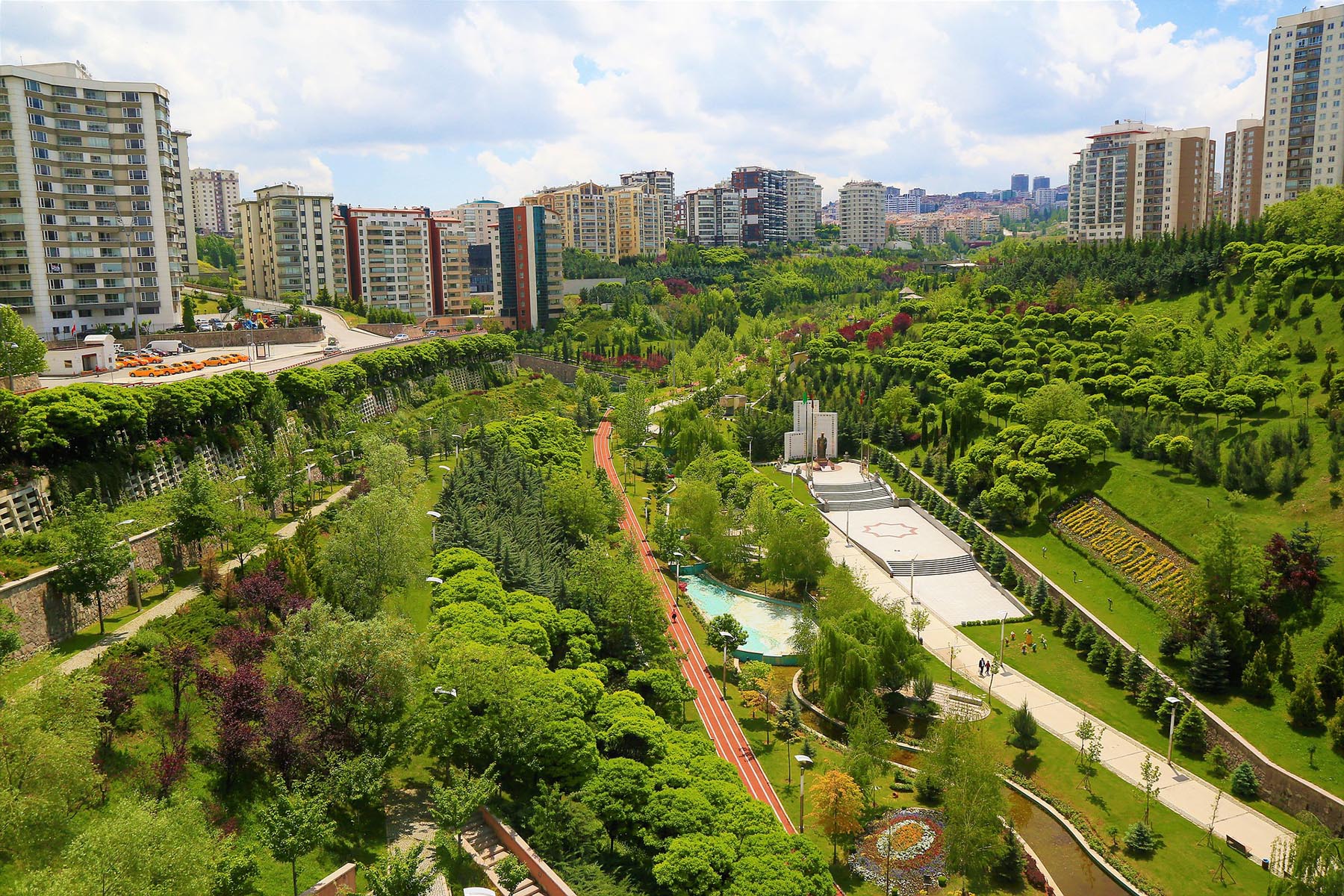Cities across Europe are trialling schemes such as roof gardens and ‘mobile forests’ to embed more nature into urban areas in an effort to protect their citizens from climate change events like heatwaves, floods and droughts.
Cities are becoming harder places to live in as climate change brings higher temperatures, water scarcity and flooding that not only makes already crowded urban areas less comfortable but also put lives at risk.
But it may be possible to protect citizens from these threats by integrating more nature into urban areas, according to researchers.
‘We lost sight on how to work with nature,’ said Dr Laura Wendling, an urban scientist at the VTT Technical Research Centre of Finland. Using natural systems, however, it is possible to help cities adapt to climate change, she says.
Nature-based solutions can provide cities with urban cooling, cleaner air, regulated water supplies and flood protection. They include simple approaches like planting new trees and creating parks with a rich collection of biodiversity. But they can also include more complex solutions like covering roofs in vegetation that are efficient at capturing carbon from the atmosphere, pavements that absorb rainwater and mobile forests – portable trees in pots that can be moved to hotspots to provide shade and clean air.
‘We know nature-based solutions are really good at helping cities,’ said Dr Wendling. ‘(But) we don’t have a really good handle on how to best place nature-based solutions to get the greatest benefit.’
Dr Wendling is the technical coordinator of UNaLab, a project looking to get the information needed to convince more cities to greenlight nature-based solutions. The project is rolling out a selection of pilots in Eindhoven in the Netherlands, Tampere in Finland and Genova in Italy, to demonstrate whether it is possible to use nature to improve the cities’ resilience to warmer temperatures or better water management.
Among the solutions they will trial are greener cycling paths, which take cyclists along routes with more plant life and can reduce their exposure to air pollution. They will also use algae to clean water by removing pollutants such as nitrates, and ponds engineered to capture excess rainwater to protect cities during storms.
The project will monitor the impact of the combined solutions in each city and attempt to quantify how much they reduced temperatures, cleaned air and water or prevented flooding. This will be done through a combination of special sensors, weather monitoring, manual data collection and citizens submitting useful information through apps.
Dr Wendling hopes the project will help cities to pinpoint what types of nature-based solutions they should implement and where they should be. She said it could allow cities that have in the past overlooked ‘the benefits of interacting with nature’ to find ways of being more resilient to climate change.
‘Ultimately we need to have cities that are more liveable, more resilient to environment and social perturbations and nature-based solutions provide us that buffering capacity (to cope),’ said Dr Wendling.
But competition for space in already busy and growing cities could stand in the way of integrating more nature into urban environments. By 2050, 80% of Europe’s population is expected to live in cities, up from 70% today, increasing the demand for land further. It means strong data will be needed to ensure nature has a place in cities rather than less sustainable, but cheaper, infrastructure like densely built apartment blocks.
Ultimately we need to have cities that are more liveable, more resilient to environment and social perturbations.
– Dr Laura Wendling, VTT Technical Research Centre, Finland
Rain gardens
Many densely populated cities also have historic buildings that can make it difficult to implement nature-based solutions.
‘It can be very difficult to change a city, especially if they are old,’ said Raúl Sánchez-Francés, an urban greening specialist at CARTIF Technology Centre in Spain. ‘But we need to consider cities as an ecosystem and the human as part of this ecosystem.’
Mr Sánchez-Francés is the coordinator of URBAN GreenUP project, which is developing a methodology to help cities incorporate nature-based solutions into their urban plans.
Their plan is to use front-runner cities – Izmir in Turkey, Liverpool in the United Kingdom and Valladolid in Spain – as demonstration sites to trial over 100 different nature-based solutions, including green roofs that capture carbon, rain gardens in car parks, plants that act as pollutant filters and vertical vegetation that capture rainwater and reduce floods.
The project is due to implement its first solutions in 2020, including using air-cleaning plants on the front of a shopping centre in Valladolid and with an urban mobile forest in Liverpool. They then expect other solutions to be rolled out by 2022. They will then use the evidence they collect to help other cities see how nature can help deal with climate change while improving air quality and water management.
There are five cities that are interested in replicating the solutions – Chengdu in China and Quy Nhon in Vietnam, Ludwigsburg in Germany, Mantova in Italy and Medellin in Colombia. Having these cities prepared to pick up the successful solutions is a key step because, in some places, integrating nature into the urban environment is seen rather negatively, according to Mr Sánchez-Francés.
Pollinators like bees, wasps and other insects, for example, make a vital contribution to ensuring the health of green spaces in cities. ‘People sometimes perceive them as pests,’ said Mr Sánchez-Francés.
He added that the project would be working with communities, and schools in particular, to help citizens see the benefits of nature-based solutions. By demonstrating that they are not just improving air quality, but also human wellbeing and making their cities a cleaner, healthier and safer place to live, he hopes it will be possible to overcome this reluctance in some cities to have more plants.
‘If you teach people about nature-based solutions then they want nature-based solutions,’ said Mr Sánchez-Francés.
Originally published on Horizon.

